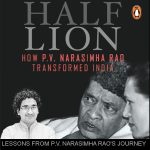Podcast Themes
Multiple perspectives on a topic that you are curious about!

Thomas speaks about how we can teach reframing to kids, something that we don’t explicitly discuss with children. He speaks about the fact that children, often, are better at this than we adults think they are.

Thomas says that designers distinguish between features and benefits, negotiators distinguish between positions and interests and policy experts between outputs and outcomes. He expands on the nuance here around focusing on the underlying and not getting swept away by surface level considerations.

Thomas speaks about presented problems versus open-ended problems. He says that there are three types of open-ended problems, something around a pain point, something around a nebulous goal or a solution someone fell in love with. We speak about how we approach some of these tough open-ended problems as we navigate through life.

Thomas speaks about the myth of the False Binary and how that can lead us to choosing from a limited set of options. It is a very powerful concept which can have a profound implication on how we make choices especially during key phases of transitions.

Thomas speaks about the context behind the fact that we have mirrors in elevators and speaks about the criticality of not taking problems too literally. He speaks about how our default wiring can sometimes lead us to frame problems in a certain way and how it can be limiting.

One of the key elements of Judgment that Andrew speaks about is the notion of looking at the entire range of possibilities. Sometimes we fall into the bias of “what you see is what there is” during a transition. It is critical to ensure that we examine the entire range of possibilities before we take a call in a certain situation.

Andrew speaks about how we need to seek diverse inputs while going about a decision and not just look for people that reaffirm our view. He refers to Abraham Lincoln who had the reputation of assembling people around him that gave him a contra-view.

Jennifer speaks about the distinction between feeling something is right versus thinking that something is right. She mentions that the feeling of rightness often arrives a few milliseconds before the actual process of cognitive certainty around a problem and this could lead to us forming an opinion first and then back-filling the data to suit the answer we end up feeling right about.

Sudhir speaks about the close link between IIMA and HUL in terms of the approach towards problem solving and Marketing. He speaks about the role of PL Tandon and Labdhi Bhandari in helping build the IIMA Marketing curriculum along with Prof AK Jain. He also shares an example of when he failed at framing the right question when he was in the Ice Creams business.

Dr. Guha speaks about Gandhiji went about making complex decisions. He talks about how he was able to combine the need to be democratic and to listen to the various people around him with the ability to be decisive and back his instincts given the overall context.

Vinay talks about how Narasimha Rao made decisions or chose not to make decisions strategically depending on the political context. He mentions that often people think of Narasimha Rao as an intellectual but Vinay argues that he was a man of action but also somebody who was acutely aware of his political ability to drive through change.

Vinay talks about how Narasimha Rao combined the notion of intellectual agility (ability to fundamentally shift one’s beliefs when new data presents itself) and implementation agility (knowing how to drive change through a complex system). He talks about how Narasimha Rao could play Lion, Fox or Mouse and the criticality of timing in these situations.